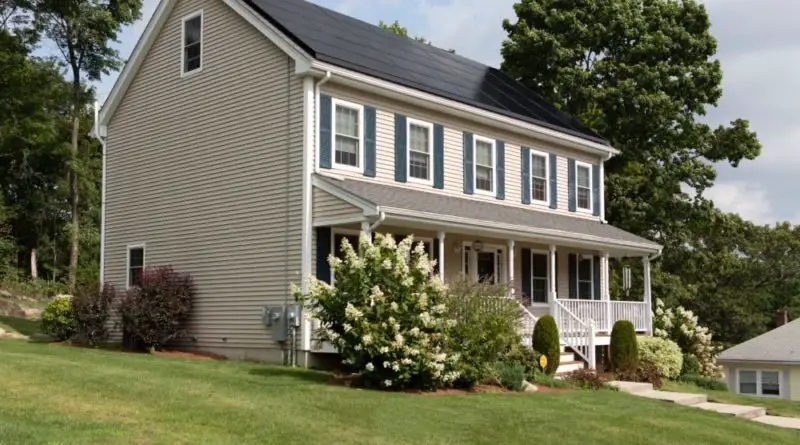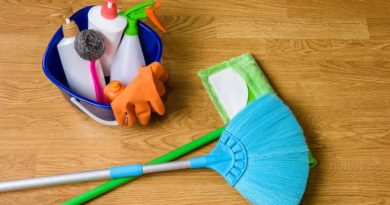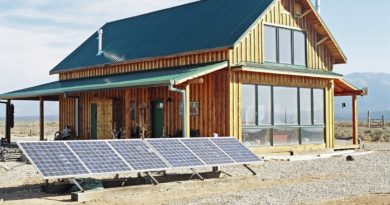Last modified on July 6th, 2020 at 11:51 pm
5 Ways to Optimize Home Efficiency and Reduce Energy Costs
Over the last few decades, there has been a great deal of discussion about the issues surrounding energy consumption. Climate change, pollution from coal-fired power plants, and dependency on non-renewable energy are just a few popular topics. And while these issues are often larger conversations that involve industries like transportation, automobiles, and manufacturing, the idea of optimizing energy efficiency impacts us on an individual level, especially in our homes.
Whether you own a home or rent an apartment, saving energy in your living space is probably something that you have considered. Saving money on utility bills is a no-brainer for anyone, and certain investments can provide long-term savings that can dramatically reduce energy costs while lowering one’s carbon footprint. So what can you do to use less energy in your home and help lower energy costs? Here are a few ways that you can optimize home efficiency and lower your energy bills.
1. Upgrade Your Home’s Insulation
First, let’s start with the basics. Heat rises, so installing insulation in your roof is a great way to keep your winter heating costs under control. You can also look at getting insulation installed into wall cavities to stop heat from escaping through your walls. Insulation works in both directions, so it will also keep you cooler and reduce your air conditioning costs in the summer-time.
You should also consider potential places where hot or cold air is escaping from your home. Ensure that your house has good ventilation but also block off any air and heat leaks. If you have a fireplace or wood heater, then consider installing a chimney damper. Ensure that windows and doors do not have unnecessary gaps. Avoid things such as down-lights in your ceiling that provide places for air and heat to escape into your attic.
2. Install Solar Panels
Another fairly obvious method that still needs to be mentioned is to install solar panels. Investing in solar energy long-term can dramatically cut down on your energy costs and even potentially make you money if you produce more energy than you use up.
You can also couple this with battery storage methods such as the Tesla Powerwall to ensure that you have a steady and reliable supply of power even if there is an issue with the energy grid. This is great if you are running computers and other electronics in a home business and want to give yourself a buffer to protect against issues with power supplied from the grid.
New technology is making solar power a more attractive proposition in many ways. The solar roofing tiles showcased by Tesla a few years ago seem to be having a slow start but there will likely be more action and competition in this space in the future. Roof-mounted solar panels will probably always be the more efficient and effective option though, so don’t wait for solar roof tiles to become a thing before considering installing solar. You are losing money every day that you don’t have solar panels on your roof.
Many areas have government rebates available that can significantly reduce the cost of installing solar power hardware. Enquire at your local government offices to see what they have to offer.
3. Invest in a Solar Water Heater
Heating your household water for showers and washing likely makes up a significant part of your energy bill. The sun shines for free, however, and you can make use of some of that free energy for your water heating needs by installing a solar water heater.
Solar water heaters are mounted on your roof and heat water using the sun’s rays. When the sun isn’t shining your water still gets heated by a standard electric water heater that is part of the installation, so you get the best of both worlds.
4. Adopt an Energy-Efficient HVAC System
If you have an older heating and cooling system installed in your house then you may find that it is wasting energy and costing you money. Some systems may also introduce health issues as the system ages, degrades, and potentially becomes contaminated with fungal and bacterial infections.
Modern energy-efficient HVAC systems are highly efficient and are often more effective at properly heating and cooling your home than older technology. Talk to your local HVAC dealers and installers to see what is available to fit your home and what they recommend to give you the best results.
5. Install Energy Saving Window Film
One cheaper energy-saving measure that you shouldn’t neglect is to get your windows treated with heat and UV obstructing plastic film. This is like an upgrade for your windows that can block around thirty-five percent of radiant heat and ninety-eight percent of ultraviolet radiation from entering your home. The level of UV protection is notable, as blocking it lets you save more than just energy. Your carpets, blinds, curtains, and furniture will all have their surface finishes faded and damaged by UV radiation over time. This reduces their useful life-span and increases their cost as a result due to the increased frequency of replacing or refurbishing them.Energy-saving window films work by using metalized plastic film that obstructs and reflects infra-red and ultraviolet radiation. Other non-metallic films are also available, including some that use ceramic materials. These films were originally developed for the early space program as a way to stop dangerous heat and radiation from entering spacecraft through glass portholes, windows, and other means. They have since found extensive use with residential and commercial housing. This is one of the many ways that investment in space exploration has paid for itself. So if you make use of these films in your home you will be able to say that your house is truly part of the space age.
These energy-saving films come in a variety of styles. You can get film that does its job while blocking near to no visible light and being nearly indistinguishable from an untreated window as a result. You can also get tinted films and films with a slight mirror finish that act as a privacy screen and a two-way mirror. This lets you keep an eye on what is going on outside your home while stopping peeking eyes from peering in.
Energy-saving window films from companies such as 3M have been proven to repay their costs via energy savings in around three years. This means that at the three-year mark the film basically costs you nothing to install, and for every day after that you are losing money by not having it installed.
Pretty much every energy-saving method you can implement around your home pays for itself fairly quickly and saves you a great deal of money in the long term. You are effectively throwing money away by not having these energy-efficient measures installed around your home. Explore all options to improve energy efficiency around the house and start enjoying that extra spending money in your pocket from your reduced power bill as soon as possible.





